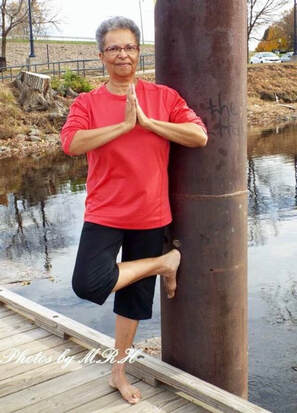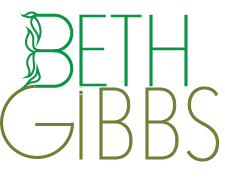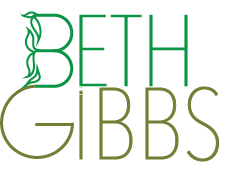ENLIGHTEN UP! a blogSelf-awareness stories: lighting our way to clarity, contentment and resilience in a complicated world.
|
 “Step with great care and great tact, and remember that life’s a great balancing act.” — Dr. Seuss Good point! Let’s get our balancing act together! Due to a variety of cognitive and physiological issues our ability to balance changes as we age. How we face that reality is important because improving our ability to balance is the best way to prevent falls, and live longer in an optimally healthy state. Some of the changes we face as we age are inevitable but with knowledge, prevention and rehabilitation we can regain some level of physical balance and decrease the risk of falling and injury. The dictionary definition of physical balance is: “an even distribution of weight enabling someone or something to remain upright and steady.” There are two primary types of physical balance: 1. Static balance is the ability to maintain a position without moving, such as standing in a long line in the supermarket, reaching away from your body without falling or standing on one foot. 2. Moving balance allows you to maintain your balance while walking, climbing stairs, stepping up and down on a curb, exercising or performing daily activities and tasks. Moving is like breathing for me and I’m really good at it. I move from the first moment my foot hits the floor in the morning to the last moment when that same foot completes my plop into bed at night. I have been known to stop in the middle of the day and ‘dance like nobody’s watching.’ Of course, I have my ‘slouch on the couch’ time (who doesn’t) but I don’t stay still for too long. I also notice that I move more from fall through spring. Summer heat saps my energy so I move less from June through August and when I do move, I move slowly. If you find moving balance difficult, because of a physical condition, vision problem or fear of falling you may limit your activities, which in turn will limit your independence. If you are challenged by moving balance here are two suggestions to try. Heel-Toe Walking Benefits: strengthens the leg and trunk muscles and improves coordination 1. Begin by standing straight on firm flooring (no carpets or rugs). 2. Hold onto a counter, table or wall if you need extra support. 3. Lift your toes and the balls of your feet off the ground and balance on your heels. 4. Walk several feet on your heels while keeping your body upright. 5. Return to your starting position by lifting your heels off the floor and walking the distance on your toes. 6. Repeat the entire exercise 2 more times. 7. Try to do this twice a day until your moving balance improves. Jack-In-The-Box Benefits: strengthens the leg and trunk muscles and improves coordination 1. Begin by standing straight on firm flooring (no carpets or rugs). 2. Hold onto a counter, table or wall if you need extra support. 3. Shoes can be on or off but keep your feet together and your torso straight. 4. Bend your knees and lift your heels off the floor as you straighten your legs and raise your arm (or arms if you are not holding onto a support) overhead. 5. Hold for 3 to 5 breaths. 6. Work up to 2 sets of 8 repetitions. 7. Try to do this 3 times a week until your moving balance improves. On to static balance, which, for me, is another matter entirely. It’s been a lifelong challenge, in part, I suspect, from three structural misalignments in my pelvis, which is rotated and tilted with one side higher that the other. Sigh. If I find myself having to stand in one position for a long time, I have to shift from one foot to the other to keep my hips from stiffening and giving me the sensation that they are locking up. In terms of my yoga practice, balance poses have never been among my favorites and I actively avoided them. However, once I learned the importance of good balance as a way of reducing the risk of falling and injury, I decided to work with my dislike of balance, realign my mindset and as Cher said to Nicolas Cage in Moonstruck, “Snap out of it!” It’s been a few years but I can confidently say that with practice, and a consistent routine of pelvic alignment exercises that I learned from Lee Albert, founder of Integrative Positional Therapy (leealbert.com), I am much better at static balance. If you are challenged by static balancing here are two suggestions to try. Standing Balance Exercise I learned this from Ruth Bender, my very first yoga teacher. She’s no longer with us but you can still find her books and information online if you search for: ruthbenderyoga Benefits: strengthens the muscles in the feet and legs 1. Stand behind your chair and hold on with both hands. 2. Stand on your right foot, bend your left knee and raise your left foot to the back. 3. Hold this position to the count of five. 4. Stand on your left foot, bend your right knee and raise your right foot to the back. 5. Hold this position to the count of five. 6. Increase the holding time every day for a few seconds to reach the recommended time of 30 seconds. 7. After a few weeks of practice try to do it with your hands off the chair but keep your hands close ‘just in case.’ Note: For more of a challenge, you can gradually work up to one to two minutes, practice with your eyes closed, and/or practice on more uneven surfaces such as a carpet, grass or sand. Seated Boat Pose Benefits: strengthen the core, which is closely related to the ability to balance 1. Sit about halfway forward in your chair with your feet on the floor. 2. With your arms out to the side at shoulder height, exhale, contract your abdominal muscles, keep your left knee bent and raise the left foot off the floor. Hold for three breaths. You may choose to lean backward and let the chair support your back. 3. On an inhalation lower the left foot. 4. Repeat this sequence on the right side. 5. Repeat steps 1 through 4 a few times or on an exhalation, lean back, contract your abdominal muscles, raise both feet, and hold for three breaths. 6. Slowly increase the holding time to five breaths or more if you are comfortable. In my chair classes (ages 60 – 80+) most of the students accomplish this by slowly building up over time. Good luck working on your physical balance!
0 Comments
Your comment will be posted after it is approved.
Leave a Reply. |
Archives
July 2024
AuthorBETH GIBBS started her yoga practice in 1968, four months after her son was born and she’s been practicing ever since. She currently teaches all levels therapeutic yoga classes for adults, and specialty classes for seniors in the Hartford, Connecticut area. Beth is a certified yoga therapist through the International Association of Yoga Therapists and is guest faculty at the Kripalu School of Integrative Yoga Therapy. She writes for the blogs, Yoga for Healthy Aging, and Accessible Yoga. Her master’s degree from Lesley University in Cambridge, MA is in Yoga Therapy and Mind/Body Health. Categories |
|
|
Enlighten Up! a Blog
|
Copyright © 2023 Beth Gibbs

 RSS Feed
RSS Feed
